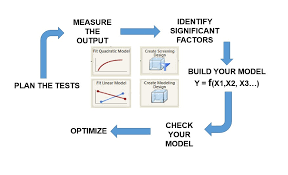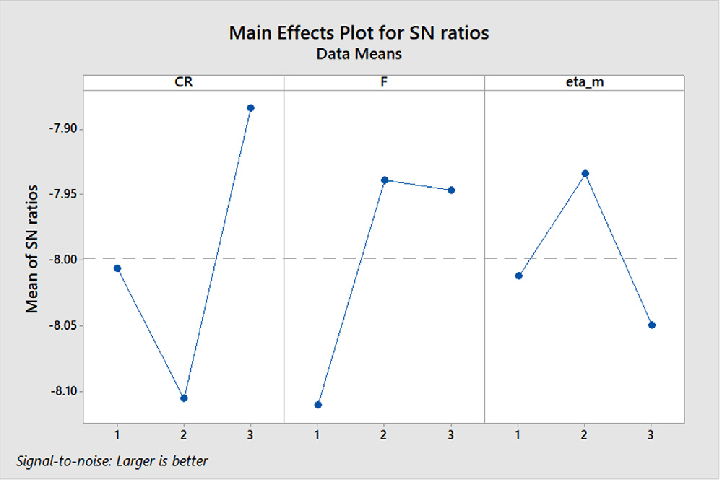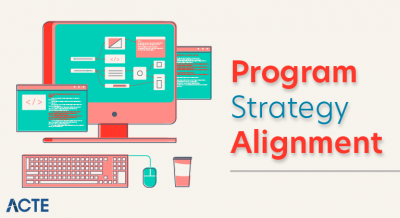
- Introduction
- Basic Concepts of DoE
- Arrangement
- Parts of Experimental Design
- Reason for Experimentation
- Analyze Design Guidelines
- Trial of Means – One Factor Experiment
- Multifaceted Experiments
- Progressed Topic – Taguchi Methods
- Conclusion
- Design of Experiments (DOEs) alludes to an organized, arranged strategy, which is utilized to track down the connection between various elements (suppose, X factors) that influence an undertaking and the various results of a venture (suppose, Y factors). The technique was authored by Sir Ronald A. Fisher during the 1920s and 1930s.
- Ten to twenty investigations are planned where the appropriate variables differed deliberately. The aftereffects of the tests are then broke down to order ideal conditions to observe the elements that have the most impact on the outcomes as well as those that don’t and to recognize connection points and cooperative energies among the elements.
- DOEs are principally utilized in the innovative work division of an association where larger part of assets goes towards improvement issues.To limit enhancement issues, it is critical to minimize expenses by leading not many analyses. Design of Experiments is valuable for this situation, as it just requires few examinations, accordingly assisting with lessening costs.
- The term explore is characterized as the deliberate technique did under controlled conditions to find an obscure impact, to test or lay out a theory, or to show a known impact. While examining an interaction, tests are frequently used to assess which cycle inputs altogether affect the interaction yield, and what the objective level of those data sources ought to be to accomplish an ideal outcome (yield). Examinations can be planned in a wide range of ways to gather this data. Design of Experiments (DOE) is additionally alluded to as Designed Experiments or Experimental Design – each of the terms have a similar importance.
- Test configuration can be utilized at the mark of most prominent influence to lessen configuration costs by accelerating the Design interaction, diminishing late designing Design changes, and decreasing item material and work intricacy. Planned Experiments are likewise amazing assets to accomplish producing cost reserve funds by limiting cycle variety and decreasing revamp, scrap, and the requirement for review.
- This Toolbox module incorporates an overall outline of Experimental Design and connects and different assets to help you in directing planned analyses. A glossary of terms is likewise accessible whenever through the Help capacity, and we prescribe that you read through it to look into any new terms.
- Set Good Objectives: Before one starts to Design an analysis, it is critical to set out its unbiased. With a characterized objective, it is not difficult to screen out factors not applicable to the analysis. This way one upgrades the vital basic variables.
- In the underlying phases of venture advancement, it is prescribed to utilize a Design of test, decision of a fragmentary two-level factorial. This Design of trials screens countless elements in insignificant runs.
- Nonetheless, when one sets a bunch of good goals, numerous superfluous variables are dispensed with. With distinct destinations, chiefs can utilize a reaction surface Design of examination which investigates not many variables, though at many levels.
- Additionally drawing up great destinations toward the starting aides construct a strong comprehension of the undertaking as well as make reasonable assumptions for it’s result.
- Measure Responses Quantitatively: Many Designs of Experiments end in disappointment on the grounds that their reactions can’t be estimated quantitatively.
- For instance, item investigators utilize a subjective strategy for deciding whether an item passes quality affirmation or not. This isn’t effective in plans of investigations as a pass/fizzle isn’t adequately precise.
- Duplicate to Dampen Uncontrollable Variation: Replicating a given arrangement of conditions ordinarily offers more chances for one to unequivocally gauge reactions.
- Recreating likewise offers one the chance to distinguish critical impacts like signs in the midst of the regular interaction wild varieties, similar to commotion.
- For certain activities, varieties, for example, commotion muffle the sign, so it is valuable to find the sign to clamor proportion prior to doing a Design of investigation.
- Randomize the Run Order: In request to sidestep wild impacts, for example, changes in unrefined substance and instrument wear, it is important to run tests in a randomized request.
- These variable impacts can significantly affect the chose variable. On the off chance that a test isn’t run in an arbitrary request, the Design of analysis will indicate factor impacts that are truth be told from these variable impacts.
- Shut out Known Sources of Variation: Through hindering, one can screen out the impacts of referred to factors, for example, shift changes or machine contrasts.
- One can partition the exploratory runs into homogenous squares and afterward numerically eliminate the distinctions. This builds the responsiveness of the Design of trial. Notwithstanding, it is vital to not shut out anything one needs to study.
- Know Which Effects (if any) Will be Aliased: A moniker implies that one has transformed at least one things similarly simultaneously.
- Do a Sequential Series of Experiments: When directing a Design of examination it is critical to lead it in an ordered way, that is, data gathered in one analysis ought to have the option to be applied to the following.
- Continuously Confirm Critical Findings: At the finish of a Design of trial, it is not difficult to expect that the outcomes are exact.
- Notwithstanding, it is critical to affirm one’s discoveries and to confirm the outcomes. This approval should be possible utilizing numerous other administration apparatuses accessible.
- Factors, or contributions to the interaction. Elements can be delegated either controllable or wild factors. For this situation, the controllable variables are the elements for the cake and the stove that the cake is heated in. The controllable factors will be alluded to all through the material as variables.
- Note that the fixings list was abbreviated for this model – there could be numerous different fixings that have a huge bearing on the final product (oil, water, enhancing, and so forth) Moreover, there could be different sorts of elements, like the blending strategy or instruments, the succession of blending, or even individuals included.
- Individuals are by and large thought to be a Noise Factor (see the glossary) – a wild element that causes inconstancy under typical working conditions, yet we can handle it during the trial utilizing impeding and randomization. Potential variables can be sorted utilizing the Fishbone Chart (Cause and Effect Diagram) accessible from the Toolbox.
- Levels, or settings of each component in the review. Models incorporate the broiler temperature setting and the specific measures of sugar, flour, and eggs picked for assessment.
- Reaction, or result of the examination. On account of cake baking, the taste, consistency, and presence of the cake are quantifiable results possibly affected by the elements and their separate levels. Experimenters regularly want to try not to enhance the interaction for one reaction to the detriment of another.
- Consequently, significant results are estimated and dissected to decide the elements and their settings that will give the best by and large result to the basic to-quality attributes – both quantifiable factors and assessable characteristics.
- Looking at Alternatives. On account of our cake-baking model, we should look at the outcomes from two unique kinds of flour. Assuming it worked out that the flour from various sellers was not huge, we could choose the least expense merchant. In the event that flour were huge, we would choose the best flour. The experiment(s) ought to permit us to settle on an educated choice that assesses both quality and cost.
- Recognizing the Significant Inputs (Factors) Affecting an Output (Response) – isolating the crucial not many from the unimportant many. We may pose an inquiry: “What are the huge variables past flour, eggs, sugar and baking?” Accomplishing an Optimal Process Output (Response).
- Diminishing Variability. “Would the formula be able to be changed so it is bound to constantly come out something very similar?” Limiting, Maximizing, or Targeting an Output (Response). “How could the cake be made as damp as conceivable without crumbling?” Further developing cycle or item “Vigor” – readiness for use under differing conditions.
- Adjusting Tradeoffs when there are numerous Critical to Quality Characteristics (Ctqc’s) that require advancement. “How would you create the best tasting cake with the most straightforward formula (least number of fixings) and briefest baking time?”
- The variables to be tried.
- The levels of those factors.
- The construction and design of exploratory runs, or conditions.
- Quite possibly the most well-known sorts of analysis is the correlation of two interaction techniques, or two strategies for treatment. There are multiple ways of dissecting such an examination relying on the data accessible from the populace as well as the example. Quite possibly the most straight-forward technique to assess another cycle strategy is to plot the outcomes on a SPC outline that additionally incorporates authentic information from the standard interaction, with laid out control limits.
- Then, at that point, apply the standard guidelines to assess wild conditions to check whether the interaction has been moved. You might have to gather a few sub-bunches worth of information to make an assurance, albeit a solitary sub-gathering could fall outside of the current control limits. You can connection to the Statistical Process Control outlines module of the Toolbox for help.
- An option in contrast to the control diagram approach is to utilize the F-test (F-proportion) to analyze the method for substitute medicines. This is done naturally by the ANOVA (Analysis of Variance) capacity of measurable programming, however we will show the estimation utilizing the accompanying model: A suburbanite needed to find a speedier course home from work. There were two choices to sidestep traffic bottlenecks. The worker planned the excursion home north of a month and a half, recording ten important informative elements for every other option.
- As displayed on the table above, both new courses home (B&C) have all the earmarks of being speedier than the current highway A. To decide if the distinction in treatment implies is because of irregular possibility or a measurably critical different interaction, an ANOVA F-test is performed.
- The main result of the table is the F-proportion (3.61). The F-proportion is identical to the Mean Square (variety) between the gatherings of 5.51.The Model F-proportion of 3.61 suggests the model is significant.The p-esteem (‘Probability of surpassing the noticed F-proportion expecting no critical contrasts among the means’) of 0.0408 shows that there is just a 4.08% likelihood that a Model F-proportion this enormous could happen because of commotion (irregular possibility). At the end of the day, the three courses contrast fundamentally as far as the time taken to arrive at home from work.
- Assuming a stretch incorporates the worth of nothing (signifying ‘zero contrast’), the comparing pair of means don’t vary altogether. You can utilize these stretches to distinguish which of the three courses is unique and by how much. The spans contain the logical upsides of contrasts of treatment implies (1-2), (1-3) and (2-3) individually, every one of which is probably going to contain the valid (populace) mean distinction in 95 out of 100 examples.
- Notice the subsequent stretch (1-3) does exclude the worth of nothing; the method for highways 1 (A) and 3 (C) vary altogether. Indeed, all values remembered for the (1, 3) stretch are positive, so we can say that highway 1 (A) has a more extended drive time related with it contrasted with highway 3 (C).
- Multifaceted investigations are intended to assess different elements set at numerous levels. One methodology is known as a Full Factorial investigation, wherein each variable is tried at each level in each conceivable blend with different elements and their levels. Full factorial investigations that concentrate on totally matched associations can be monetary and down to earth assuming there are not many variables and just 2 or 3 levels for each element.
- The benefit is that everything matched collaborations can be contemplated. Notwithstanding, the quantity of runs goes up dramatically as extra factors are added. Explores different avenues regarding many variables can immediately become inconvenient and expensive to execute, as shown by the diagram beneath:
- To concentrate on bigger quantities of elements and collaborations, Fractional Factorial plans can be utilized to lessen the quantity of runs by assessing just a subset of all potential mixes of the variables. These plans are exceptionally financially savvy, yet the investigation of associations between factors is restricted, so the trial format should be chosen before the examination can be run (during the analysis configuration stage).
- You can likewise utilize EngineRoom, MoreSteam’s internet based measurable instrument, to Design and examine a few famous planned analyses. The application remembers instructional exercises for arranging and executing full, fragmentary and general factorial plans. Start a 30-day free preliminary today.
- Design of Experiments is a significant device that can be used in most assembling enterprises. Administrators, who utilize the technique, won’t just save money on costs yet in addition make enhancements in the nature of their item as well as guarantee process effectiveness.
- When Design of Experiments is finished, the chiefs should put forth an additional an attempt to approve the result and do encourage investigation of the discoveries.
Introduction :-

Basic Concepts of DoE :-
To utilize Design of Experiments effectively, it is vital to stick to eight basic ideas. When the accompanying eight stages are successively followed, you will actually want to get a fruitful result from Design of Experiments.
Step 1
Step 2
Step 3
Step 4
Step 5
Step 6
Step 7
Step 8
Arrangement :-
On the off chance that you don’t have an overall information on measurements, survey the Histogram, Statistical Process Control, and Regression and Correlation Analysis modules of the Toolbox preceding working with this module.
You can involve the MoreSteam’s information examination programming EngineRoom® for Excel to make and dissect many usually utilized yet strong exploratory plans. Free preliminaries of a few other factual bundles can likewise be downloaded through the MoreSteam.com Statistical Software module of the Toolbox. Furthermore, the book DOE Simplified, by Anderson and Whitcomb, accompanies an example of amazing DOE programming that will labor for 180 days after establishment.
Parts of Experimental Design :-
Consider the accompanying graph of a cake-baking cycle (Figure 1). There are three parts of the cycle that are broke down by a planned investigation:
Reason for Experimentation :-
Planned investigations have numerous expected uses in further developing cycles and items, including:
Analyze Design Guidelines :-
The Design of a test resolves the inquiries illustrated above by specifying the accompanying:
A very much planned examination is just about as straightforward as could be expected – acquiring the necessary data in a practical and reproducible way.
While planning an examination, pay specific notice to four potential snares that can make exploratory challenges:
1. In expansion to estimation mistake (clarified above), different wellsprings of blunder, or unexplained variety, can cloud the outcomes. Note that the expression “blunder” isn’t an equivalent word with “botches”. Blunder alludes to all unexplained variety that is either inside an examination run or between test runs and connected with level settings evolving. Appropriately planned analyses can recognize and evaluate the wellsprings of blunder.
2. Uncontrollable variables that incite variety under ordinary working conditions are alluded to as “Commotion Factors”. These variables, like different machines, various movements, unrefined components, mugginess, and so on, can be incorporated into the examination so their variety doesn’t get lumped into the unexplained, or analysis mistake. A critical strength of Designed Experiments is the capacity to decide variables and settings that limit the impacts of the wild factors.
3. Correlation can frequently be mistaken for causation. Two factors that change together might be exceptionally associated without one causing the other – the two of them might be brought about by a third component. Consider the case of a porcelain plating activity that makes baths. The chief notification that there are irregular issues with “orange strip” – an unsuitable harshness in the finish surface. The chief likewise sees that the orange strip is more awful on days with a low creation rate.This model features the significance of considering in functional information while planning an examination. Conceptualizing activities and Fishbone Cause and Effect Diagrams are both incredible strategies accessible through the Toolbox to catch this functional information during the Design period of the test. The key is to affect individuals who live with the cycle consistently.
4. The joined impacts or collaborations between factors request cautious idea before directing the trial. For instance, consider an analysis to develop plants with two data sources: water and compost. Expanded measures of water are found to build development, however there is where extra water prompts root-decay and has a hindering effect. Similarly, extra compost has a valuable effect until a lot of manure consumes the roots. Intensifying this intricacy of the primary impacts, there are likewise intuitive impacts – a lot of water can invalidate the advantages of manure by washing it away. Elements might create non-direct impacts that are not added substance, but rather these must be contemplated with more complicated trials that include in excess of 2 level settings. Two levels is characterized as direct (two focuses characterize a line), three levels are characterized as quadratic (three focuses characterize a bend), four levels are characterized as cubic, etc.
Trial of Means – One Factor Experiment :-
Multifaceted Experiments :-
Progressed Topic – Taguchi Methods :-
Dr. Genichi Taguchi is a Japanese analyst and Deming prize champ who spearheaded methods to work on quality through Robust Design of items and creation processes. Dr. Taguchi created partial factorial trial plans that utilization an extremely set number of test runs. The points of interest of Taguchi test configuration are past the extent of this instructional exercise, in any case, it is helpful to comprehend Taguchi’s Loss Function, which is the reinforcement of his quality improvement reasoning. Customary reasoning is that any part or item inside determination is similarly fit for use.

All things considered, misfortune (cost) from low quality happens just external the determination (Figure 5). Notwithstanding, Taguchi mentions that a section possibly inside the determination is truly minimal better than a section barely outside the particular.Accordingly, Taguchi depicts a constant Loss Function that increments as a section goes astray from the objective, or ostensible worth (Figure 6). The Loss Function specifies that society’s misfortune due to inadequately performing items is relative to the square of the deviation of the presentation trademark from its objective worth.
Taguchi adds this expense for society (customers) of low quality to the creation cost of the item to show up at the complete misfortune (cost). Taguchi utilizes planned trials to deliver item and interaction plans that are more hearty – less delicate to part/process variety.






